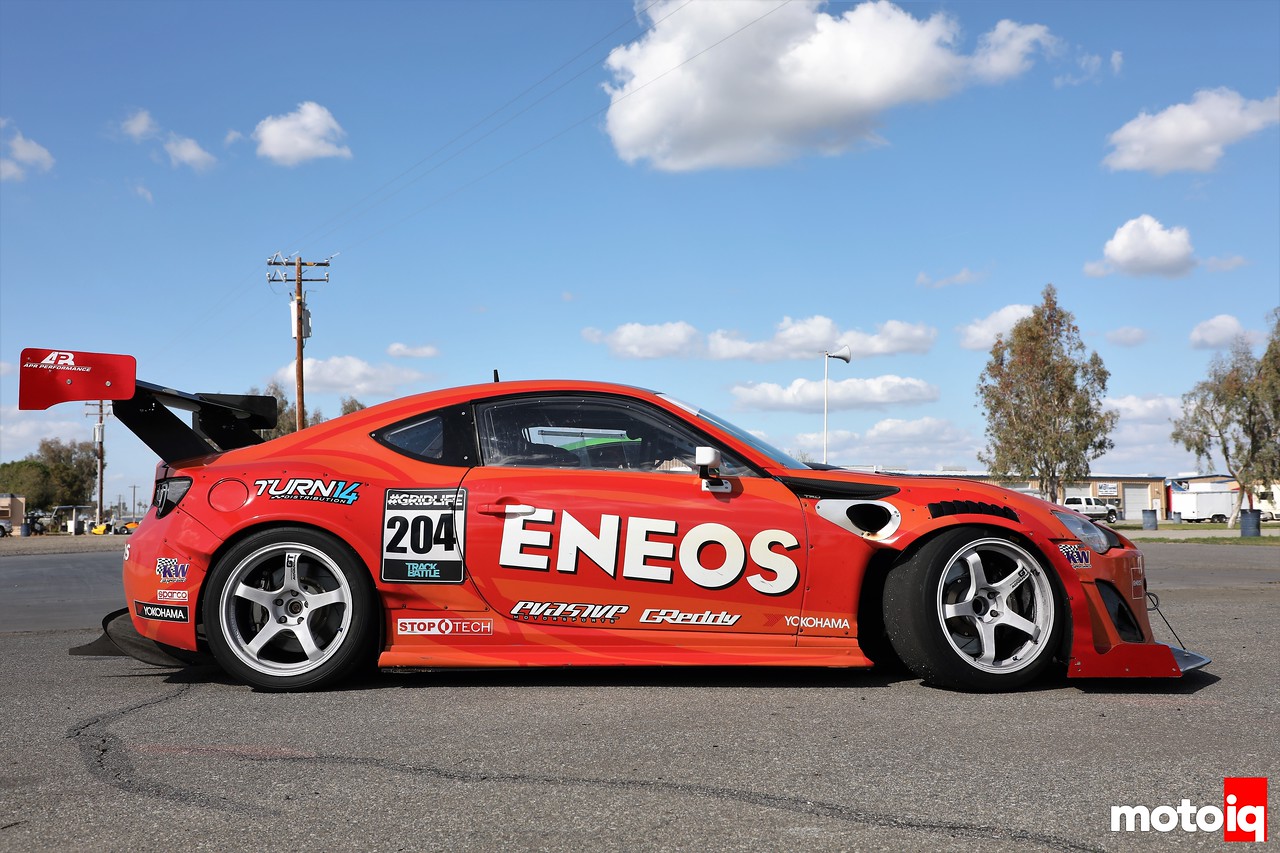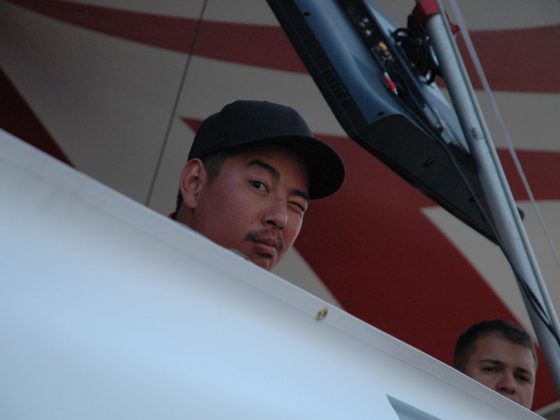
The rear Wisefab suspension lowers the car through the rear upright which helps maintain the proper roll center. Evasive Motorsports modified the rear geometry to reduce toe steer and anti-squat to improve traction and stability of the car when on-throttle. The suspension is fully adjustable and pivots on spherical bearings. All bearings are in double shear. A bolt on brace helps stiffen the chassis in this area as well.

KW motorsport 3-way adjustable lightweight alloy body rear shocks are used with a handy piggyback remote reservoir. The piggyback reservoir means that the adjustment knobs are easy to reach, which is a big help during testing.

A Whiteline 3-way adjustable rear bar is used to give some additional adjustability to the rear suspension. Whiteline braces also stiffen up the sway bar mounts on the chassis.

The front brakes are by Stoptech and were engineered specifically for this car. The front rotors are wide annulus 355mm by 32mm Aerorotors fully floated on alloy hats. The wide annulus assures that the brakes have maximum swept area for the rotor size. In testing the car always had brake problems as a front heavy car with big slicks needs a lot of braking power.
Stoptech designed the system with plenty of capacity so the previous brake’s water cooling could be done away with and so that the team could possibly close off the brake cooling ducts to improve aerodynamics.




8 comments
Great build and write up. One small note is that the vertical strakes on a diffuser limit spanwise flow. Without them, the air will tend to move laterally across the diffuser surface. Obviously, that reduces the effectiveness of the diffuser. Of course, there’s a small drag penalty, but it’s more than made up for in the aero efficiency.
Fun fact: These strakes were first developed for the swept wing jet fighter aircraft. Because the ailerons are generally located near the wingtips (for the maximum moment arm) the control surface on swept wings was losing ability due to boundary layer separation. This was because the swept wing caused the air to turn outward (spanwise flow.) By introducing a wing fence (vertical strake projecting above boundary layer) you limit spanwise flow and the aileron remains effective, so even under extreme yaw angles.
We did it mostly to try to keep the flow attached with a less than optimal angle. We used a pre-made diffuser to expedite stuff. We might redo it later if there is time and money.
Yeah, it’s difficult to know if the flow is staying attached or separating. Obviously, you can’t use wool tufts, because gravity.
Maybe you could make your own ‘flowviz’ paint, but I think that gravity would make that difficult, too.
Not many good options without a wind tunnel. And no reason to spend $$$ unless you know it’s going to work.
Also, the front end should always see the bulk of the aero effort. If the front isn’t working properly, then it won’t matter what you do at the rear. The flow will be turbulent by then, anyway.
Best of luck on Pikes Peak.
page 5 pic 1
it looks like there’s what looks like a delrin bushing on the knuckle between where the tie rod and LCA connect to it. From what I can tell its between 2 rigid non-moving parts… and its not in the pics of the kit on the Wisefab website… whats its purpose?
It’s a steering stop.
oh i see, that makes sense…
I was low key hoping to see a double wishbone conversion similar to what the HKS time attack car did
Not legal for our events!
that makes sense… I didn’t really consider that